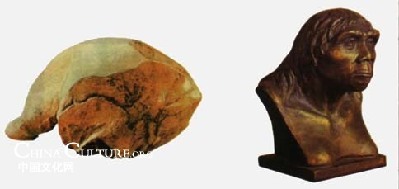Outline of Beijing's History
Early history
The earliest remnants of human habitation in the Beijing municipality are found in the caves of Dragon Bone Hill near the village of Zhoukoudian in Fangshan District, where the Peking Man lived. Homo erectus fossils from the caves date to 230,000 to 250,000 years ago. Paleolithic homo sapiens also lived there about 27,000 years ago. There were cities in the vicinities of Beijing by the 1st millennium BC, and the capital of the State of Yan, one of the powers of the Warring States Period (473-221 BC), Ji (薊/蓟), was established in present-day Beijing.

After the fall of the Yan, the subsequent Qin (221-207 BC), Han (206BC-220), and Jin (265-420) dynasties set up local prefectures in the area. In Tang Dynasty (618-907) it became headquarter for Fanyang Jiedushi, the virtual military governor of current northern Hebei area. An Lushan launched An Shi Rebellion from here in 755 AD.
Medieval period
In 936, the Later Jin Dynasty (936-947) of northern China ceded a large part of its northern frontier, including modern Beijing, to the Khitan Liao Dynasty. In 938, the Liao Dynasty set up a secondary capital in what is now Beijing, and called it Nanjing (the "Southern Capital"). In 1125, the Jurchen Jin Dynasty conquered Liao, and in 1153 moved its capital to Liao's Nanjing, calling it Zhongdu (中都), "the central capital." Zhongdu was situated in what is now the area centered around Tianningsi, slightly to the southwest of central Beijing. Some of the oldest existing relics in Beijing including the Niujie Mosque and the Tianning Temple date to the Liao era.
Mongol forces burned Zhongdu to the ground in 1215 and rebuilt it to the north of the Jin capital in 1267. In preparation for the conquest of all of China, Yuan (Mongol) Dynasty founder Kublai Khan made this his capital as Dadu (大都, Chinese for "great capital"), or Khanbaliq to the Mongols, otherwise spelled as Cambuluc in Marco Polo's accounts. Construction of Dadu finished in 1293. The decision of the Khan greatly enhanced the status of a city that had been situated on the northern fringe of China proper. Dadu was situated north of modern central Beijing. It centered on what is now the northern stretch of the 2nd Ring Road, and stretched northwards to between the 3rd and 4th Ring Roads. There are remnants of Yuan-era wall still standing and are known as the Tucheng (土城 literally, the “earth wall”).
|

